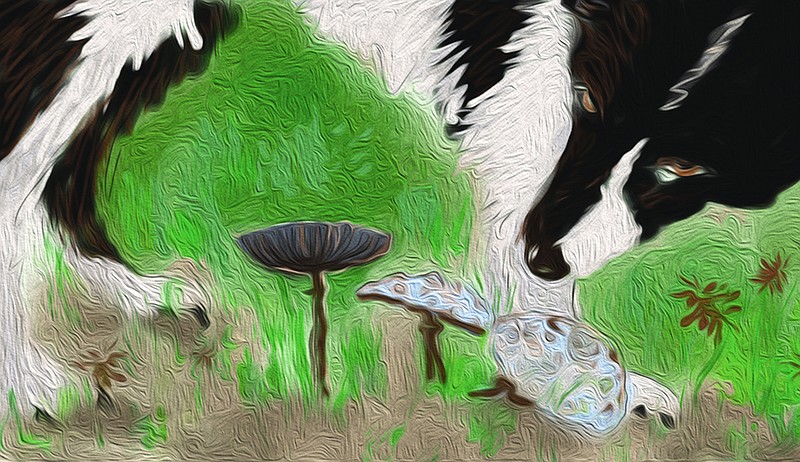Q: We've had a lot of rain this year, and our yard is filled with a variety of mushrooms. How can we identify those that could poison our dogs, and how will we know if our dogs ate them?
A: Animal poison control specialists are receiving twice as many calls about mushroom poisoning this year as last. That's frightening because toxic mushrooms grow throughout the United States during all seasons of the year, popping up quickly in moist areas.
Toxic mushrooms look a lot like nontoxic mushrooms. Even scarier, one or two toxic mushrooms can grow in a group of harmless mushrooms or beneath your mulch.
Only an expert can differentiate a toxic mushroom from one that's harmless. So, assume the mushrooms growing in your yard are toxic unless an expert tells you otherwise.
Some mushroom species are so toxic that ingestion of only a tiny amount is deadly. For example, half a death cap mushroom can kill an adult human.
So, it's best to remove all mushrooms from your yard. Put them in a plastic bag; dispose of the bag in your trash; and wash your hands.
If one of your dogs eats a toxic mushroom, he'll develop clinical signs that reflect the mushroom species and involve one or more of the following body systems:
◼️ Brain. Dogs quickly become weak, disoriented, uncoordinated and agitated. They may vocalize and develop tremors and seizures. "Magic mushrooms" contain psilocybin, which causes hallucinations in humans and seems to do the same in dogs.
◼️ Stomach/intestines/liver. Mild to severe abdominal pain, regurgitation and diarrhea can develop within 15 minutes or be delayed up to 12 hours. Depending on the species, the mushroom can slow the dog's heart or damage his liver. The death cap mushroom, found throughout the U.S., causes liver failure and death within two days of ingestion.
◼️ Kidneys. Mushrooms that damage the kidneys cause regurgitation and increased drinking and urination within a week of ingestion.
If one of your dogs develops any of these clinical signs, rush him to the veterinarian for treatment.
Patrol your yard for mushrooms, and immediately remove any you find. Teach your dogs to "drop it" and "leave it" in case they discover a mushroom before you do.
Q: We adopted two cats from the animal shelter years ago. Now that we're moving, how do we change their microchip contact information?
A: I'm impressed you remembered to add this important task to your moving checklist. The microchip registry contains your contact information, which must be correct if your cats escape during the move or wander away from their new home and get lost.
Anyone who finds a pet can ask an animal shelter or veterinarian to scan the pet for a microchip. The website petmicrochiplookup.org indicates which manufacturer's registry contains the pet owner's contact information.
You can ensure your cats find their way home to you by updating their microchip contact information. Their microchip paperwork, which is probably with their adoption records, will explain how to update the registry.
If you can't find your cats' microchip documents, make an appointment with your veterinarian to update vaccinations before you move, scan your cats' microchips and give you the chip numbers and manufacturer. Then call the manufacturer's microchip registry, or update your contact information online.
Lee Pickett, VMD, practices companion animal medicine in North Carolina. Contact her at
vet@askthevet.pet
